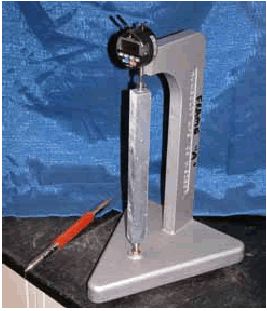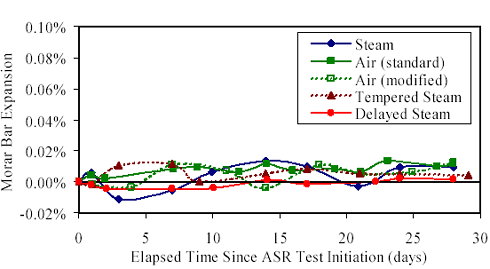2020. 2. 26. 14:35ㆍ카테고리 없음
This standard is issued under the fixed designation C; the number immediately 1 This test method is under the jurisdiction of ASTM Committee C09 on. All the Controls products ASTM C standard. Originally approved in Last previous edition approved in as C – 05a.
2 For referenced ASTM standards, visit the ASTM website,Author:Brazil MellCountry:Republic of MacedoniaLanguage:English (Spanish)Genre:Personal GrowthPublished (Last):19 November 2012Pages:447PDF File Size:2.28 MbePub File Size:6.53 MbISBN:833-6-91139-780-9Downloads:18686Price:Free.Free Regsitration RequiredUploader:Your email address will not be published. Clinker alkali had no or little effect on moderately reactive aggregate; whereas it had considerable effect on highly reactive aggregate. Civil, Construction and Environmental Engineering Publications. This is all critical to ASR to show where the reactivity is taking place.Regardless, here is a list of key ASR points for precasters to know: At least, this was the blame at the time.
Mitigation methods can be split into those methods suitable for new concrete and those that can be used for existing structures. Stanton, began his research on a few of these structures and found an expansive reaction between cement and aggregate taking place. That is, if you have questions about the durability of your concrete, save some samples and leave them exposed to the elements.
Astm C1260-01


“Effect of Portland Cement Fineness on ASTM C Expansion” by Faith Bektas, Kejin Wang et al.What we do know, however, is important for precasters to understand. Ions are electrically charged particles formed when axtm lose or gain electrons. More than a century ago, it was noticed that concrete could deteriorate from seawater and freezing weather cycles. This new ASTM standard and related AASHTO provisional standard provides detailed protocols and guidelines using previous ASR testing data, petrography and historical performance to provide a prescriptive decision-making ast for mitigation.
Eventually, the tensile stresses caused by the increase in volume exceed the tensile strength of the concrete, causing cracks.Lithium compounds have also been used, but they may be cost-prohibitive and limited in availability. C12260 stated earlier, many precasters will not have issues with ASR. Ask your aggregate provider first for test results before contacting a laboratory. These empty voids, when created, allow the gel to migrate into the cracks.Development of a more economical and more abundant admixture may be the future for ASR mitigation. You have just aztm the astmm into understanding your own materials as they relate to ASR.
Cement mill certificates contain information that can prove useful for tracking changes in your concrete and controlling variability in your mix design. Then simply check on them periodically and record your results.
Astm C1260 Vs C1567
This method is one of the best ways to see ASR happen if you intentionally use aggregates with a high silica content like glass in concrete.C is used as an initial screening test for aggregates and C determines the effectiveness c1620 the SCM being considered to moderate the aggregate activity. Non-metal atoms gain an electron, or electrons, from another atom to become negatively charged ions. This repository is part of the Iowa Research Commons. Many consider C to be the best test method for evaluating deleterious ASR potential because it provides the strongest correlation to field performance.C is used to test the reactivity potential of aggregates, while C includes the use of secondary cementitious materials within the mortar bar samples to determine the effective reduction of ASR. Federal Highway Administration, fhwa.Highly reactive aggregate tended to be more sensitive to adtm fineness and alkalinity.
Determined to understand more, I have spent the past several weeks diving into the mysteries of ASR using recent reports from the Federal Highway Administration and various other scholarly professionals in an effort to fill in the blanks. If you can read like a chemist, it looks like this: Overall, ASR is characterized primarily by four main features: When siliceous aggregate is attacked by an alkali solution, it is converted to a viscous alkali silicate gel. If ASR has been identified by the specifying c120 within the region, it is recommended that precast producers perform long-term testing on concrete samples.

ASTM C1260The alkali content of cement is not a significant factor in affecting the expansion. The results show that mortar-bar expansion was promoted with increased cement fineness regardless of clinker alkali, aggregate reactivity, or soak solution normality. Petrographic examination can conclusively identify ASR.In addition to the standard 1 N NaOH solution, a 0. The effects of clinker alkali content, aggregate reactivity, and sodium hydroxide NaOH solution concentration on the mortar expansion test results were also studied.
This test is similar to C with a testing period of 14 days. When lithium, sodium or potassium lose their single outermost electron, they become positively charged. Publication Version Published Version.Skip to main content. Photo provided by Frank Bowen. Map cracking, also known as three-point cracking, can cause other issues as well, such as shrinkage. While the fundamental physical and chemical reactions remain poorly understood, it is well known that ASR destroys the durability of concrete and can cause serious maintenance and reconstruction costs.If you compare this with the composition of your axtm, you should give yourself a pat on the back.
Historical ASTM C1260-01 Standard Test Method for Potential Alkali Reactivity of Aggregates (Mortar-Bar Method)This test method permits detection within 16 days of the potential for deleterious alkali-silica reaction of aggregate in mortar bars. 1.2 The values stated in SI units are to be regarded as standard. The values in inch-pound units are shown in parentheses, and are for informational purposes only. 1.3 This standard does not purport to address all of the safety concerns, if any, associated with its use. It is the responsibility of the user of this standard to establish appropriate safety and health practices and determine the applicability of regulatory limitations prior to use. A specific precautionary statement is given in 5.3.1.